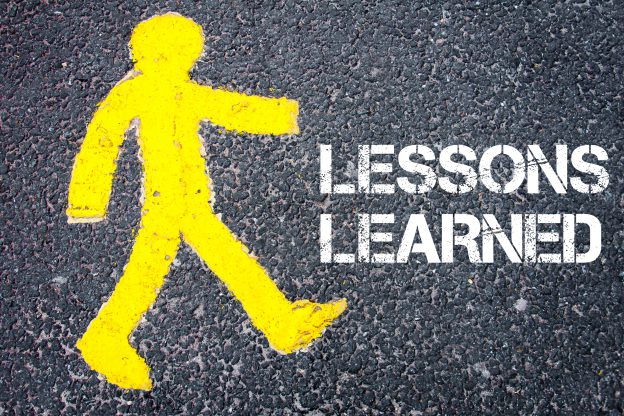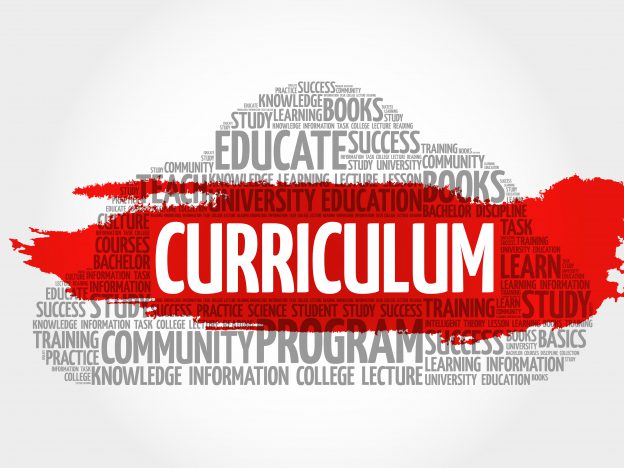The California Context
How the California Reading Wars Got Resolved: A Personal Story
by Bill Honig
The Rise of Whole Language
Back in the 1970s when I was a member of the California State Board of Education, I wrote a pamphlet on reading instruction with JoEllen Taylor from Far West (now WestEd) entitled Planning an Effective Reading Program and published by them. We integrated using a skills approach to teach decoding and phonics with literature and writing-based strategies—a consensus that was blown apart in the late 1980s by the whole language movement’s opposition to phonics instruction.
During my tenure as California’s superintendent of public instruction, in the late ’80s we developed the Reading and Literature Framework, which stressed the importance of students being well read and encountering and discussing rich, varied literature. The framework mentioned phonics, but as it turned out not forcefully enough to withstand the whole language movement, which was then gathering steam.
The proponents of whole language believe that teaching skills such as phonics hurts children. Instead, they advocate an alternative approach that stresses reading together and using pictures, syntax, and context to guess the meaning of words instead of learning how letters map to sounds to sound out the words on a page in a linguistically justified sequence of instruction. When they do use word attack skills they suggest students sound out the first letter and then use context to guess the word. They provide “leveled readers” that are not designed to practice letter/sound correspondences students have learned and don’t distinguish between the sequence of letter/sound correspondences already taught and the more complex ones still to be addressed. Since English is complex linguistically such a strategy leaves many children confused and frustrated. Their position is based on the mistaken belief that learning to read is like learning to speak—a natural, unconscious process that is hindered by organized skill instruction. It isn’t.
I had seen the deleterious effects of this approach 20 years before when it became widespread in the ’60s as part of the free school movement. As a fourth- and fifth-grade teacher, I noticed that many of my entering students were never taught to read. Sitting them on a couch and giving them a book to read just didn’t cut it.
Because of my work with JoEllen Taylor, I made the mistake of assuming that stressing the importance of literature and rich content would not detract from the necessity of teaching phonics. At the time, I had not yet even heard of the whole language movement and was not aware of its growing strength among educators so I was oblivious to the need to include in the framework very clear and detailed guidance about the importance of phonics.
Jeanne Chall had published the definitive study on teaching children to read, which demonstrated that teaching phonics produced much better readers than the looser strategy being pushed by an unfounded belief system like whole language. I had met and respected Jeanne, and when she saw a draft of the framework she called and warned me that people would use it to stop teaching phonics. I didn’t believe her and assured her that educators would never make such a ridiculous mistake. It turned out she was right and I was wrong because that’s exactly what happened. The framework was hijacked by the whole language movement.
It took a few years to realize what had happened. In one of his more destructive acts, Governor George Deukmejian eliminated the testing program in California in 1990, after a long campaign against me personally and public education in general. The long-standing California Assessment Program (CAP) was one of the best in the nation. We only tested at three grades. We used matrix sampling, which meant that each child only took a portion of the test. This allowed more thorough questions in less testing time and avoided the negative consequences of attaching tests to accountability. The current well-regarded National Assessment of Educational Progress (NAEP) is patterned after CAP.
In the ’80s, CAP scores, including reading, were improving substantially—proof that our efforts were working. Reading scores leveled off at the end of the decade, but we didn’t yet detect a trend to worry about. The governor claimed he abolished the program as a cost-cutting measure, but no one believed him. The result was a calamity. We were flying blind precisely when whole language started to significantly impair reading instruction. Thus, we made no course correction.
Persuasive Reading Research
In my years as superintendent, I had to think about a broad array of educational issues. When I left office in 1993, I felt it would be a welcome change to concentrate on just one educational area and get deeply involved in it. I picked beginning reading because I felt responsible for the way our framework was used by the whole language movement with such damaging results. So I started reading in depth and talking to experts about how children learn to read. In 1990, Marilyn Adams had published her groundbreaking work, Beginning to Read: Thinking and Learning about Print. It was based on extensive research confirming and extending Jeanne Chall’s previous work on the processes children need to master to learn to read. I had not had time to read Marilyn’s book because of an all-encompassing political conflict with the governor and legal proceedings stemming from that fight, but now tackled the book. The tome was hard for me to understand. I had to read it three times before I could comprehend all of what she was saying. Luckily, I knew Marilyn, and over the course of many phone calls, she graciously played the role of tutor, answering all my questions.
She then invited me to the 1995 meeting of the Society for the Scientific Study of Reading, which had been formed two years before. At the meeting Marilyn introduced me to the top reading researchers in the country. For several years Reid Lyon, who was head of the Behavior and Development branch of the National Institute of Child Health and Human Development, had made large grants to a network of research projects investigating why some children learn to read so easily and why others have great difficulty. The studies delved into how children learn to read, identified the difficulties many encounter, provided a broader definition of requisite foundational skills, and confirmed the importance of an organized, structured program for teaching beginning readers.
For those who are interested, what follows is a short description of their research: why, contrary to the claims of whole language advocates, most children do not learn to read naturally in the same way they learn to speak (especially in English, which is linguistically complex) and why children need to be taught in an organized fashion.
The Role of Foundational Reading Skills
First, these researchers examined speaking since print represents spoken words. When we listen to someone speak, a stream of sounds like the phonemes /m/ and /a/ /n/ all run together and we hear the word man. We have been programmed to recognize this sequence of sounds as a word and immediately connect that spoken cluster of sounds to the concept or meaning underlying it. For the process to be rapid, we have learned not to pay attention to or even discern the individual phonemes that make up a word but to perceive groups of these sounds as words. The process is very fast, unconscious, and efficient; otherwise we wouldn’t be able to concentrate on the meaning of what the speaker is saying.
Initially, reading for understanding depends on recognizing the symbols on a page set off with spaces as a word that’s part of our speaking vocabulary—sounding out the letters in the word until it is recognized as if it were being spoken (assuring that students are familiar with the meaning of the word being decoded at the start is crucial especially for English-language learners and low-income children). Later, meaning also comes from more sophisticated strategies that require recognizing syllables and morphemes, navigating complex syntax and text structures, extensively developing vocabulary, connecting to what you know and drawing inferences, and extending meaning by writing or discussing what you read.
So reading initially is a double code. The printed word stands for the spoken sounds of the word, which in turn represent the meaning behind that spoken word. Luckily, English uses the alphabetic system to represent spoken words in print. That system was invented eons ago by some unsung geniuses who figured out that spoken words in a language are made up of a limited number of discrete sounds (about 44 in English), which allowed for millions of potential combinations or words to represent concepts. Crucially, these prodigies also determined that one could represent those sounds by symbols (letters or combinations of letters), which when decoded and combined would generate the spoken word. The catch was how to make the process as rapid, automatic, and unconscious as speech so that a reader could concentrate on thinking about what was being read. Complicating the task of understanding what one reads is evidence that comprehending meaning suffers if more than about five percent of the words are not known automatically. The same is true of speech. It doesn’t take many words that you don’t hear or don’t understand to stop you from comprehending what’s being said.
The research community, relying on the latest brain research, discovered how good readers do it. The secret is to develop a growing corpus of automatically recognized words so that a word instantly pops into your head by just looking at it. Then students can read material with large numbers of automatically recognized words and keep growing their lexicon by reading new text, sounding out or decoding (eventually assisted by pattern recognition, as explained below) the few previously unencountered printed words found there.
What did these researchers discover about how people learn to automatically recognize a word? One of the most important findings was that both sounds (phonemes) and symbols (graphemes, or letters and letter combinations) were crucial to rapid retrieval of words. Hearing-impaired children, for example, usually read several grades below expected levels because their information about a word is limited to its letters. When they are taught to substitute signing for the sound information they reach grade level.
To make use of the full bundle of necessary information for rapid retrieval, a student must initially read through the whole word (sounding it out), which requires attending to all of the letters, connecting the letters and letter combinations to the sounds they represent, blending the sounds together, and linking the sounds to the meaning of the word in the context. When this process is successfully repeated several times, the student forms a neural model of that specific word in the brain that gets automatically activated upon seeing the word in print. The sounds of the word are stored in one part of the brain, the symbols connected to those sounds in another, and both are connected to the meaning stored in the frontal cortex. After a student has analyzed and correctly read a word several times, a neural model with all the information necessary for rapid retrieval is formed. (Some reading-disabled youngsters need focused interventions to succeed because they have brain-processing issues that make creating these connections or retrieving the information difficult.)
Thus, the royal road to master beginning reading is to develop the decoding tool—the ability to sound out words thoroughly so that they can eventually be stored and retrieved rapidly. As more and more words become automatic, students can read increasingly difficult text.
After a time, when students have mastered enough letter/sound correspondences, pattern recognition speeds up the decoding process. For example, if a student has learned to automatically recognize the word weight, by using analogy the student can more easily read and create a neural model for the word freight. This can only take place after the spelling pattern eight and its corresponding sounds were initially sounded out, practiced several times, and stored in permanent memory.
A critical piece of eye research demonstrated that effective readers see every letter in a word as they scan it, which activates the exact spelling and associated sounds stored in memory. I’m getting older now and sometimes catch myself misreading an i for an e in a word, which changes the meaning and makes me stop but proves I’m seeing each letter.
When teachers shortchange the process by teaching students guessing strategies such as looking only at the first letter and using context to “infer” what the word is, the full package of information never gets stored and quick retrieval is hampered the next time the student encounters the word (unless after guessing, the student uses phonics to sound out the word and confirm it’s correct and then has enough practice to store the word—a process the whole language advocates discourage). Repeating the guessing strategy each time a word is encountered is far too cumbersome and error prone for efficient reading.
Most importantly, guessing from context, even if given the first letter of a word, doesn’t work that well. In our Consortium on Reaching Excellence trainings (more about CORE later) we show a paragraph from Jack London’s Call of the Wild, with every fifth word redacted except for the first letter. We then ask teachers who believe context can help them decode words to read the passage. In hundreds of trainings, not one person could read and understand the excerpt until, finally, one teacher read the entire passage fluently. I was amazed and asked her how she did it. It turns out she has a photographic memory and had stored the passage in her brain from previous readings. It is important to note that context clues are useful to determine if a word has been correctly decoded and makes sense in the context. There are also occasions when context clues can help readers figure out a word that is not yet in their vocabulary, but context strategies can’t replace decoding. Finally, students need enough flexibility in decoding to try out various potential solutions to generating and combining sounds until they hit on a word that makes sense. For example, trying to break a word into syllables in different ways with different vowel sounds—“Is it re•cent or rec•ent?”
Alternatively, memorization strategies don’t work either. If students try to memorize the unique configuration of each word they quickly are overwhelmed. There are just too many words in English for that approach to be successful, and children who rely on memorizing words without learning phonics flame out quickly.
As a caution, when educators use the word decoding, they may be referring to two distinct ideas, which is confusing. First, there is the automatic recognition of words that are stored for rapid and unconscious retrieval. Second, there is the conscious, effortful process of sounding out the word that must occur several times before it becomes automatic.
So why is this latter process difficult to master for many students? One complicating factor with learning to read in English is the linguistic complexity of the language. Learning to read in Spanish is much easier than learning to read in English because Spanish is almost completely transparent—there is nearly a one-to-one correspondence between the 22 phonemes in the Spanish spoken in the Americas and the 29 letters that represent those sounds. What you see is what you get. English, on the other hand, is all over the map reflecting the various historical contributions to the language—Anglo-Saxon, Danish, Norman French, Spanish, and so on, each with different linguistic patterns.
As a result, there are 44 sounds in English but only 26 letters, so some sounds are spelled with letter combinations. A student has to decide whether to look at one letter or a combination to generate the correct sound. Second, in English, unlike Spanish and other more transparent languages, there are many individual letters that stand for more than one sound. The letter a, for example, represents different sounds in the words cake, hat, and along. Conversely, many sounds are represented in several ways such as the long-a sound, which is spelled a in basin, a with silent e in late, ai in paid, ay in day, and so on. This lack of regularity confuses many children when they are first learning to read. Many get so frustrated they give up.
One major breakthrough in teaching reading in English was to structure the sequence of initial instruction to make it more like the transparent languages so that children aren’t overwhelmed by the multiple ways sounds are represented in English—that is, make it more like Spanish. Beginning instruction should focus on the highest-frequency sound/spelling correspondences (single consonants and short vowels) and avoid multiple representations of sounds until students begin to understand how the alphabetic system works and get the hang of sounding out words. Then the less frequent and more complex combinations can be added without causing as much confusion.
That’s why experienced researchers and practitioners advocate a sequenced rolling out of sound/spellings—from simple to complex—and teaching children how to read through, or sound out words thoroughly so the words are stored and can be automatically retrieved. It takes some time and practice for most children to master this skill, while others learn it without much effort. To support beginning readers, teachers must also provide reading materials that are made up primarily of words containing the sound/spelling relationships they have taught (decodable text). The materials should also include some irregular high-frequency words such as was and of, which must be memorized with the help of explicit instruction. Carefully selecting materials for decoding practice avoids overwhelming students with multiple sound/spellings they have not yet encountered.
Learning to sound out words in late kindergarten and early first grade—the tool a student needs to become automatic with a growing number of words—depends on the acquisition of several key precursor concepts and skills. Students must know print concepts (e.g., English text is read from left to right), be fluent in recognizing letters, be able to name letters and connect them with sounds, and extremely important, be able to hear the discrete sounds in spoken words (phonemic awareness), beginning, ending, and medial. In this last task, students must unlearn what has become second nature in understanding speech—they have learned to ignore the discrete sounds in words and just hear the whole word. Now we are asking them to reinstate their ability to hear the discrete sounds. For some that takes a bit of work. In fact, many adults, including teachers, have difficulty identifying the discrete sounds in words. For example, how many sounds do you hear in the word French? (There are five: /f/ /r/ /e/ /n/ /ch/.)
Most students can identify beginning sounds by mid-kindergarten and ending and medial sounds by the conclusion of kindergarten. Playing sound games especially with kids who haven’t developed these abilities can help them master the technique. Many finally nail the skill of hearing discrete sounds as they learn to match sounds with letters in the course of phonics instruction.
Researchers also found that if students fail to master decoding by late kindergarten to mid–first grade to sound out and recognize simple words they haven’t seen, their chances of ever becoming on-grade readers rapidly diminish. Since they don’t have a workable method for automatically recognizing a growing number of words, they fall further and further behind. Many become confused or frustrated with the complexities of English and eventually give up or become alienated from reading. That is why Response to Instruction (RtI) strategies are found to be so effective. Good initial reading instruction teaches most to decode early, and the teacher intervenes rapidly when a student is not catching on. Giving students “the gift of time” by waiting to assist under the mistaken belief that they will eventually understand the process when they are more “developmentally ready” condemns large numbers of faltering readers to a lifetime of grief. Of course, teaching phonics and decoding must be accompanied by a rich oral language, literature, writing, discussing, and vocabulary development program as described in the California ELA/ELD Framework, explicated below.
One of the more unfortunate developments currently is the tendency in many schools and districts to ignore the significant number of students not mastering beginning reading because of the absence of a research-based beginning reading program and then assigning them to intervention groups when they are not making progress. A much better strategy is to teach them well initially and support those students who are confused immediately and not wait until the damage is done and they have become frustrated.
In later grades, students are taught how to decode multisyllabic words by recognizing syllable types and division patterns; using prefixes, suffixes, and knowledge of root words; and identifying larger patterns, or chunks, encountered in similar words already learned to help them decode new words. For more about multisyllabic word instruction and assessment, see Word ID: Assessment Across the Content Areas.
Also children should receive fluency instruction, if needed, to smooth out and speed up their oral reading. All these efforts should be accompanied by extensive reading of good stories and literature by and to kids, discussing stories, a good spelling or encoding program aligned with the sound/spelling instructional sequence, assigned writing, and the buildup of content knowledge.
Three Important Decisions
Reading researchers were reporting on exciting stuff, which explained a great deal about how best to teach our children. What they were saying was powerful, but it was presented in fairly esoteric technical language. I thought there might be a needed role for a translator—to put the research findings in a form that practitioners could readily understand and to work with schools to promulgate their ideas. So I made three important decisions. I started the Consortium on Reading Excellence (CORE) with Linda Diamond, Sheila Mandel, Ann Cunningham, and Ruth Nathan to work with teachers and administrators on incorporating this powerful research into practice. I also I wrote a succinct book published in 1996, Teaching Our Children to Read: The Role of Skills in a Comprehensive Reading Program. Here is the dedication:
This book is dedicated to those teachers, researchers, and leaders who have kept their common sense and are beseeching the educational community to reach an effective, working consensus on how best to teach our children to read. I hope the information provided here—which summarizes and highlights a tremendous amount of research and thinking by the leading experts in the literacy field—will help them achieve this laudable goal.
The third decision was to lobby at the state level for policies reflecting this new research. After leaving the state superintendent’s office, I teamed up with Marion Joseph, a true force of nature, who had become convinced that the whole language movement was ruining the teaching of reading to California’s children. I met Marion in 1965 when I was working for Pat Brown, then California governor, and she was working with Wilson Riles, then state superintendent. We became close (she always said she viewed me as her younger brother) but fell out when I ran against her boss in 1982. After I won, she withdrew from education and we lost contact. When I was the subject of a lawsuit brought by the state, she came to see me to find out if there was anything she could do to help. After the Language Arts Framework was disseminated, Marion noticed her granddaughter was not learning to read. After hearing gobbledygook from the teacher, she checked with her extensive school contacts. Marion was horrified at what she discovered about how reading instruction was being conducted under the influence of whole language.
Together we started lobbying key people in the state to change direction. The legislature, the new superintendent Delaine Eastin, Governor Wilson, and subsequently Governor Gray Davis got behind the effort. Marion was appointed to the State Board of Education, along with other phonics advocates, the legislature passed phonics bills and appropriated funds for professional development, and new textbooks were eventually adopted that were based on the new compelling research. An engrossing account of this effort was written by the well-respected Nicholas Lemann, published in The Atlantic magazine in 1997. The article captures how heated the controversy was during that decade.
The research findings on teaching reading I discovered in 1995, incorporated in my book which was used to start CORE, were the basis for the lobbying effort in California and were eventually enshrined in the 2000 National Reading Panel report, which was developed by some of the country’s leading reading experts. The panel reviewed more than 100,000 studies and recommended the explicit and systematic teaching of phonemic awareness and phonics, a guided oral reading strategy, and fluency and comprehension strategies. A recent neuroscience research project from Stanford confirmed the earlier findings that supported the role of phonics and decoding. For a current summary of the latest research, see Linnea Ehri’s article in the 2014 issue of Scientific Studies of Reading. The Power of RTI and Reading Profiles: A Blueprint for Solving Reading Problems by Louise Spear-Swerling and Essentials of Assessing, Preventing, and Overcoming Reading Difficulties by David Kilpatrick are among the best research-based books on how to teach children to read and explain some current misguided reading approaches that are still in widespread use. For an article featuring top educators affirming that almost all students can learn to read if they are initially taught correctly, see Liana Heitin’s post in Education Week.
For a useful compendium on research-based reading instruction and strategies, see Honig, Diamond, and Gutlohn’s Teaching Reading Sourcebook, Updated Second Edition, and its companion book, Assessing Reading: Multiple Measures, 2nd Edition. Both books were produced by CORE, where I am president. The Sourcebook was one of only 10 publications endorsed by the National Council on Teacher Quality to cover beginning reading adequately. Of the 10, it was the fourth most used publication for preservice teachers.
The same ideas were incorporated in the recently developed Common Core State Standards and in the new California ELA/ELD Framework based on those standards, which also stressed wide reading and the importance of a systematic buildup of content knowledge in the major disciplines. For a useful executive summary on the California ELA/ELD standards, go to this website.
Here is a short quote from a 2014 article authored by Jo Ann Isken, Carol Jago, and myself, which explains the ideas behind the framework:
The outer ring of the graphic [a symbol used in the framework] identifies the overarching goals of ELA/ELD literacy and instruction. By the time California’s students complete high school, they should have developed readiness for college, career, and we added civic life; attained the capacities of literate individuals; become broadly literate; and acquired the skills for living and learning in the twenty-first century.
California has grounded the framework in these broader purposes of the language arts. We want students to be able to understand complex text and ideas as well as reason, analyze, persuade, and problem solve. We also wish them to encounter a rich liberal arts education—learning about the world, civic life, and the human heart, being well-read, and helping them reach their potential. We would like our youngsters to encounter a significant representation of the best classic and contemporary literature including novels, biographies, essays and plays as well as coherent content informational text in science, history, and the humanities. We would like them to experience the joy of reading engrossing stories and fascinating material.
So the ELA/ELD framework is about two main thrusts: First, attention to the totality of what students read both on their own in independent reading and in school in their liberal arts disciplines (including literature) during their school years, and second, the analytical, reasoning and literacy skills necessary to comprehend and apply knowledge gleaned from a variety of text structures. Both ideas are stressed in the multi-state Common Core ELA standards. To this end, the framework also recommends an organized independent reading program for each student to supplement what is read in school and provides advice on how to implement such a strategy in Chapter 2.
The developers of the ELD standards made a crucial decision from the start. They designed the standards to aid the large number of English-language learners in mastering the California Common Core Standards, which greatly facilitated the integration of the two sets of standards. They organized the ELD standards around five overarching themes—foundational skills, language, written and oral expression, content knowledge, and meaning-making strategies such as drawing inferences and making connections. The integrated ELA/ELD Framework adopted this architecture. All five themes work together to develop student comprehension.
The first strand is foundational skills. To understand the ideas in a text, the reader needs to automatically recognize almost all the words. For words already in the reader’s speaking vocabulary, that is the role of foundational skills—to teach them a process for becoming automatic with a growing number of words. Foundational skills address how to teach them these skills and include phonics, word attack skills (learning how to sound out new words, handle multisyllabic words, and recognize word structures such as prefixes, suffixes, and root words), and fluency instruction. The foundational skills in the California framework are summarized in an extremely well written resource guide by Hallie Yopp, one of the authors of the framework.
The second theme, language, deals with the crucial topic of vocabulary, text structure and syntax, and academic language—all critical to understanding text. Academic texts in English contain a large number of words that appear infrequently but are essential to understanding. To successfully complete high school, students need to understand approximately 65,000 words, although some words are members of the same word family. Consequently, from the outset, there must be a rich vocabulary development strand coupled with an extensive independent reading program. This is particularly crucial for the large numbers of low-income or ELL students who start school knowing far fewer words than their middle-class and English-speaking peers. For a valuable resource, see the Vocabulary Handbook and CORE’s Word Intelligence, which is a vocabulary program for middle-grade students. In addition, as material and sentence structure become more complex and demanding in upper elementary, students must learn to handle challenging elements such as complex sentences with multiple dependent clauses. Finally, different disciplines such as history and science organize information in different ways and students need help in navigating these varied text structures.
The third theme enhances comprehension by concentrating on a student’s ability to express ideas in writing and speaking. This strand also includes spelling and writing conventions such as grammar. Often, until you have tried to explain something, you really don’t know it.
The fourth theme deals with the vital role content knowledge plays in comprehension and the importance of a systematic buildup of disciplinary and cultural knowledge through organized class work and independent reading. See the vast work on this subject at Core Knowledge and “For Reading, Knowledge Matters More Than Strategies, Some Experts Say.” See also “Why Reading to Learn Is Seldom Taught.” And, finally, meaning making addresses the meta-cognitive skills of self-monitoring, drawing inferences, and thinking about what is being read.
For ELD students, the frameworks recommend that these strands be integrated into the regular instruction program (integrated instruction) and that schools provide a designated time for supportive instruction tailored to the language needs of the students (designated instruction).
Similar to math, English language arts shifts to a more active instructional program including book discussions, projects, research, and making arguments and taking positions in both writing and speaking.
I believe we have reached a broad-based consensus in California on the elements of good reading instruction and how best to deal with our large numbers of second-language learners. The frameworks are widely supported by educators and policymakers, although there are still too many schools and classrooms that have not yet incorporated the breadth of what these well-researched documents are recommending.
Reference Notes
Phillips, M. M. (2016, Jan 7). Military Doctors Fault Pentagon on Battlefield Casualty Care. The Wall Street Journal. http://www.wsj.com/articles/military-doctors-fault-pentagon-over-battlefield-casualty-care-1452194963
The Rise of Whole Language
Chall, J. S. (1983). Stages of Reading Development. New York: McGraw-Hill.
Persuasive Reading Research
Adams, M. J. (1996). Beginning to Read: Thinking and Learning about Print. Cambridge, MA: MIT Press.
The Role of Foundational Reading Skills
Gutlohn, L., & Bessellieu, F. (2014). Word ID: Assessment Across the Content Areas. Novato, CA: Arena Press. http://www.wordidassessment.com
Three Important Decisions
Consortium on Reaching Excellence (CORE). http://www.corelearn.com/
Honig, B. (1996). Teaching Our Children to Read: The Role of Skills in a Comprehensive Reading Program. Thousand Oaks, CA: Corwin. https://us.corwin.com/en-us/nam/teaching-our-children-to-read/book7412
Lemann, N. (1997, Nov). The Reading Wars. The Atlantic. http://www.theatlantic.com/magazine/archive/1997/11/the-reading-wars/376990/
National Reading Panel, & National Institute of Child Health and Human Development. (2000). Report of the National Reading Panel: Teaching Children to Read: An Evidence-Based Assessment of the Scientific Research Literature on Reading and Its Implications for Reading Instruction: Reports of the subgroups. Washington, D.C.: National Institute of Child Health and Human Development, National Institutes of Health. https://www.nichd.nih.gov/publications/pubs/nrp/pages/smallbook.aspx
Yoncheva, Y. N., Wise, J., & McCandliss, B. (2015). Hemispheric Specialization for Visual Words Is Shaped by Attention to Sublexical Units During Initial Learning. Brain and Language. http://www.sciencedirect.com/science/article/pii/S0093934X15000772
Ehri, L. C. (2014). Orthographic Mapping in the Acquisition of Sight Word Reading, Spelling Memory, and Vocabulary Learning. Scientific Studies of Reading. http://eric.ed.gov/?q=%22%22&ff1=subVocabulary+Development&id=EJ1027413
Spear-Swerling, L. (2015). The Power of RTI and Reading Profiles: A Blueprint for Solving Reading Problems. Baltimore, MD: Paul H. Brookes.
Kilpatrick, D. (2015). Essentials of Assessing, Preventing, and Overcoming Reading Difficulties (Essentials of Psychological Assessment). Hoboken, NJ: Wiley.
Heitin, L. (2015, Jun 12). Can Most Kindergartners Really Tackle ‘Emergent-Reader Texts?’ Coaches Say Yes. http://blogs.edweek.org/edweek/curriculum/2015/06/can_kindergartners_tackle_emer.html?utm_source=feedblitz&utm_medium=FeedBlitzRss&utm_campaign=curriculummatters
Honig, B., Diamond, L., & Gutlohn, L. (2013). Teaching Reading Sourcebook, Updated Second Edition. Novato, CA: Arena Press. http://www.corelearn.com/Products/Publications/ – Teaching-Reading-Sourcebook-Updated-2nd-Edition
Diamond, L., & Thorsnes, B. J. (Eds.). Assessing Reading: Multiple Measures. 2nd Edition. Novato, CA: Arena Press. http://www.corelearn.com/Products/Publications/ – Assessing-Reading-Multiple-Measures-2nd-Edition
National Council on Teacher Quality. (2014). Standard 2: Early Reading: What Consumers Need to Know About Teacher Preparation. http://www.nctq.org/dmsView/Teacher_Prep_Review_2014_Std2
California Department of Education. (2015, Jul). English Language Arts/English Language Development Framework for California Public Schools: K–12. http://www.cde.ca.gov/ci/rl/cf/elaeldfrmwrksbeadopted.asp
Slowik, H. Y., & Brynelson, N. (2015). Executive Summary: English Language Arts/English Language Development Framework for California Public Schools: K–12. California Department of Education. http://www.scoe.net/castandards/
Isken, J. A., Honig, B., & Jago, C. (2015, Oct 15). California’s Recently Adopted English Language Arts/English Language Development Framework: Translating the Common Core State Standards to a Coherent and Sequenced Curriculum for All Students. California Department of Education. http://www.cde.ca.gov/ci/rl/cf/documents/elaeldfwsummaryoct15.pdf
Yopp, H. (2015). Resource Guide to the Foundational Skills of the California Common Core State Standards for English Language Arts and Literacy in History/Social Studies, Science, and Technical Subjects. California Department of Education. http://www.cde.ca.gov/search/searchresults.asp?cx=001779225245372747843%3Agpfwm5rhxiw&output=xml_no_dtd&filter=1&num=20&start=0&q=Resource+Guide+to+the+Foundational+Skills+of+the+California+Common+Core+State+Standards+for+English+
Diamond, L., & Gutlohn, L. (2006). Vocabulary Handbook. Baltimore, MD: Paul H. Brookes. http://www.corelearn.com/Products/Publications/ – Vocabulary-Handbook
Word Intelligence. http://www.wordintelligence.net/
Core Knowledge. www.coreknowledge.org
Heitin, L. (2015, Oct 29). For Reading, Knowledge Matters More Than Strategies, Some Experts Say. http://blogs.edweek.org/edweek/curriculum/2015/10/for_reading_knowledge_matters_more_than_strategies.html?utm_source=feedblitz&utm_medium=FeedBlitzRss&utm_campaign=curriculummatters
Cobb, V. (2015, Jul 21). Why Reading to Learn Is Seldom Taught. http://www.huffingtonpost.com/vicki-cobb/why-reading-to-learn-is-s_b_7841040.html
 Building Better Schools
Building Better Schools









